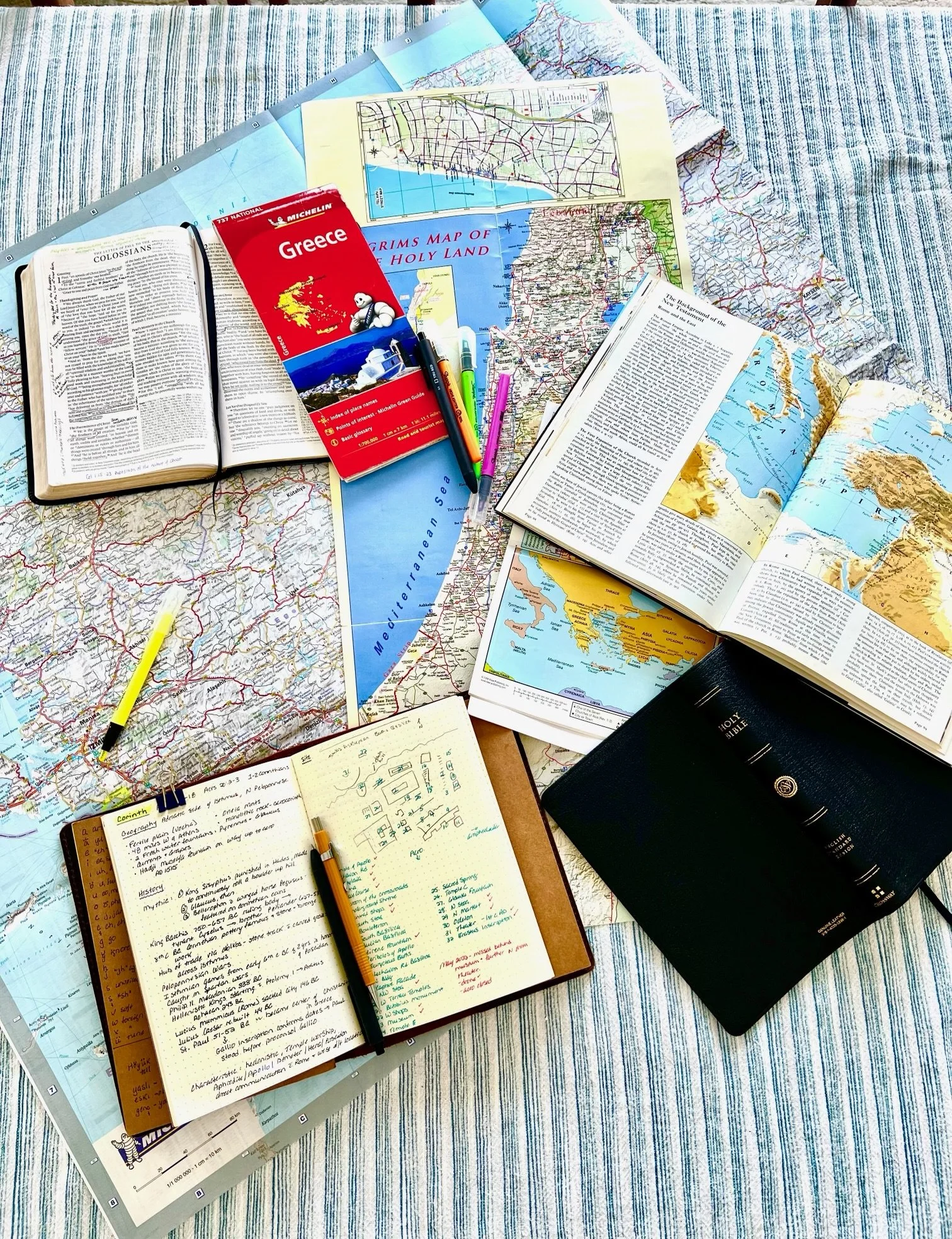How do you find these places?
When we return from our travels and do presentations or when people see the blog or pictures we often get the question….
“How do you know where to go?
How do you find these places?”
There is not an easy answer! We prepare a lot. And we have been very blessed with being friends with Dr. Jim Martin, who has lead many trips, studied archeology and biblical history, and has been very generous to take us to many places.
Our first resource is the Bible. There is a lot of very specific detail when you read intentionally looking at the geography and the setting for the events of the Bible. Routes, places, towns, buildings and even roads are very possible to figure out simply by reading God’s Word. Possibly since many of the place names are unfamiliar (and hard to say) we quickly dismiss them and focus solely on the event and not the place or it’s history. If we were to look at a map while reading we can often see a specific trade route or something geographic like a mountain pass that obviously would have been the only pass possible. We also try to limit our interest to sites that are mentioned in the Bible.
After the Bible we use a bunch of other resources all with varying degrees of reliability and success.
Google Earth is amazing at giving satellite images of locations. We have located a lot of ruins and sites simply by moving slowly over areas where we had read or studied or had been told there might remnants of roads or buildings. There is also odd little circles that appear with photos that random people have uploaded. It’s very useful, but it is not a scholarly site. But, it’s a starting point.
Bibleplaces.com is easy to search by country or by site. There are many cool pictures. The site is biblically based and gives many references to specific scriptures. And there are often very nice summaries of locations. It is definitely worth a quick check to see what is there.
Madain Project. We love this site. There are published articles and researched locations. They present very balanced reports with reliability, scripture and tradition. Great photos.
Books, Maps and Google! We have purchased many books that we have studied and spent many hours pouring over preparing for our trips. Both Margery and I also enjoy “real old fashioned paper maps”, and we find the symbols and historical markers are valuable. Many countries think of what we would call “Biblical” as part of their culture and history, so much of their history museums connect and intersect with God’s Word.
Google is a huge resource believe it or not! We have read very obscure reference articles and found names and location that have lead us to find many reliable sites and given us access to interesting places. One thing we are always specifically searching for is a site map of large archeological sites. We have been to many sites and they can be overwhelming. But if you have researched and know of the places you want to see before hand it’s much easier to understand a site. A little map can save the day and serve as a list of the places to remind you of must see locations.
We have found that searching YouTube videos also very helpful. We even watched a video made by a professor at United Lutheran Seminary in Philadelphia, Pennsylvania (oddly enough who is related to members of my church in Forest Lake Minnesota) about the Roman Roads in Greece. I contacted him and he sent me coordinates to find remnants of ancient roads. It was amazing. He also included me on an email to a number of people who all responded back to me. Two of the people turned out to be authors of books we were reading on Biblical places in Turkey! (its a small world).
If we are going to a museum I try to find an article that say “Top Ten Christian Artifacts” at what ever museum. For me in museums I kind of glaze over - everything is old and out of its time line. I am much better looking for a prepared list of items as a scavenger hunt. It gives me focus.
And lastly I am amazed how Instagram has connected me to other archeology people - real archeologists who dig in the dirt! I love knowing people I can ask “have you been here?” “what do you think about the reliability of this site?”
One of my favorite memories of a trip to Turkey was knowing that we were very near an ancient Roman Road the “Via Tauri” which St. Paul would have walked on. Our guide said they had searched for hours but could never find it. I brought up Apple Maps on my cell phone and in satellite mode found it running right next to the paved road we were driving on. Stop the bus!! It was right there next to us!
We are also in several private Facebook groups that are dedicated to the scholarly pursuit of biblical archeology. Many articles we save and say “that site has to be on our list when we go back!”

